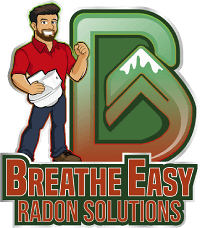Radon is often an overlooked health hazard that every homeowner should be aware of. As a naturally occurring radioactive gas, it not only infiltrates homes through common entry points but also poses a significant health risk, primarily as the second leading cause of lung cancer in the United States after smoking. In this article, we will delve into the sources of radon, its health implications, how it enters homes, detection methods, mitigation strategies, and public health insights, empowering you to take informed action against this silent threat.
What is Radon?
Radon is a colorless, odorless, and tasteless radioactive gas that originates from the natural decay of uranium found in soil, rocks, and water. It is a common element in certain geological areas, yet can infiltrate any home. This gas typically enters houses through cracks in floors and walls, gaps around service pipes, and even the water supply. Understanding the chemical properties of radon and its process of radioactive decay helps to comprehend why it is such a pervasive issue.
Health Risks of Radon Exposure
Prolonged exposure to radon significantly increases the risk of developing lung cancer. According to the Environmental Protection Agency (EPA), radon is the second leading cause of lung cancer in the U.S., attributing to approximately 21,000 deaths annually. The mechanism behind this involves radon decay particles damaging lung tissue when inhaled, causing radiation exposure. Risk factors exacerbating its dangers include long-duration exposure, high concentration levels, and smoking, which can create a synergistic effect. Though evidence for other cancers or health issues is limited, the potential risks underscore the need for awareness and prevention.
Supporting Data:
– Nearly 21,000 radon-related lung cancer deaths in the U.S. annually.
– Vulnerable groups: Children, smokers, and individuals with extended exposure.
– Radon’s risk comparison to secondhand smoke highlights its severity.
How Radon Enters Homes and Buildings
Radon enters homes and buildings through various pathways including cracks in floors and walls, construction joints, gaps around service pipes, and sump pumps. The design and ventilation of a building play a crucial role in radon infiltration, with areas rich in uranium-containing soil posing a higher threat, like Colorado’s Zone 1 classification for radon. Additionally, radon in groundwater can further contribute to indoor radon levels, especially from sources like well water.
Detecting Radon in Your Property
Detecting radon is the crucial first step in addressing its dangers. Homeowners have access to both short-term and long-term radon testing methods, with options for professional or DIY testing kits. Professional testing might offer more accurate results. Breathe Easy Radon Solutions specializes in both residential and commercial radon testing, operating in areas like Colorado Springs. Given the health implications, many states require property owners or landlords to bear the cost and responsibility for radon testing and mitigation.
Mitigating Radon Exposure
Radon mitigation is essential for reducing radon concentrations in homes. Common methods include improving ventilation through sub-slab depressurization systems, sealing cracks and gaps, and treating water sources with aeration or filtration to remove radon from well water. Engaging with certified professionals, like Breathe Easy Radon Solutions, can ensure effective mitigation. The cost of implementing these systems varies, with estimates around $3,200, but retesting post-mitigation is vital to confirm effectiveness.
Public Health and Policy Perspectives
Radon exposure is a pressing public health concern, and there is a pressing need for increased awareness and education. Government regulations increasingly mandate radon testing and mitigation, particularly in the context of real estate transactions. Different countries have varying policies on radon, but successful campaigns often involve mandatory testing and disclosure laws, as seen in Colorado. By closing knowledge gaps and fostering proactive strategies, the risks posed by radon can be significantly diminished.
Conclusion
In summary, radon presents major health risks due to its potential to cause lung cancer. Nonetheless, with the ease of testing and availability of effective mitigation solutions, addressing radon exposure is achievable. Homeowners should ensure regular testing, consult experts like Breathe Easy Radon Solutions for professional advice, and advocate for more extensive awareness initiatives. Active steps today can significantly impact long-term health outcomes and peace of mind, safeguarding homes for future generations. Contact Breathe Easy to help with you radon needs today!
